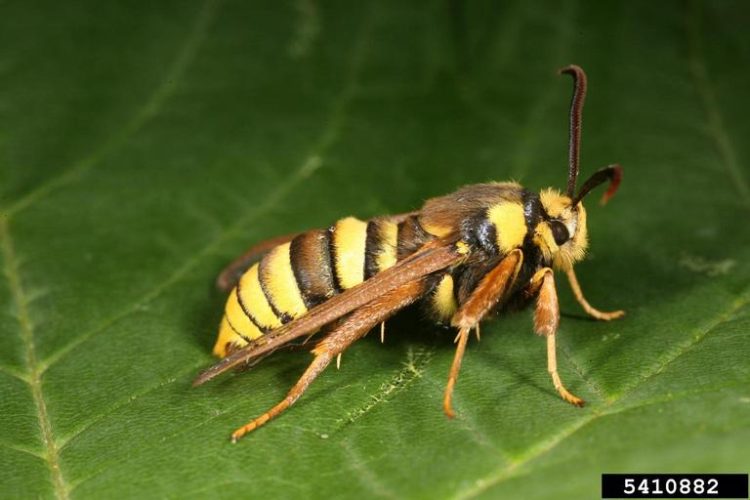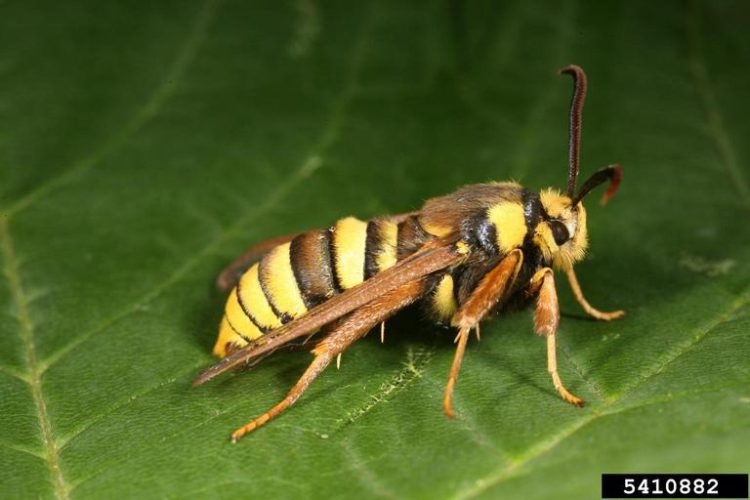The European Hornet Moth (Sesia apiformis) looks terrifying at first glance, but its uncanny resemblance to a giant wasp is just an elaborate disguise meant to keep predators at bay.
The hornet moth is a prime example of Batesian mimicry, a form of mimicry where a harmless species has evolved to imitate the look and/or behavior of a harmful species in order to protect itself from predators. In this case, the yellow and back combination, the shape of the abdomen, and of the see-through wings do a great job of creating the illusion of a menacing wasp. It’s only on closer inspection that you notice the insect’s lack of a clearly defined, wasp-like waste, a furry body, and two uncharacteristically small eyes.

Photo: Gyorgy Csoka/Wikimedia Commons
Despite the above-mentioned differences between actual giant wasps and hornet moths, telling the two apart is very tough, because the moth not only mimics the hornet’s look but actually has the hornet’s rather jerky flight when disturbed, to make its disguise even more convincing.
Despite the ominous look of the European hornet moth, the species is completely harmless to humans, as it lacks any kind of stinger, as well as the ability to bite. But it doesn’t need either of those, as its appearance alone is enough to keep most humans at a safe distance.
To get an idea of just how scared humans are of the harmless hornet moth, the most popular Google search regarding the insect is “can a hornet moth sting you?”
Sesia apiformis can be found across Europe, the UK, in parts of the Middle East, and it has recently been introduced to North America as well. Although harmless to humans, it is considered a secondary threat to poplar trees, especially in Great Britain, as they feed on their wood and also deposit their larvae in the trees, from which they emerge as adults.
The hornet moth is only one of the amazing moths we have featured on Oddity Central. Oher noteworthy examples include the humongous Giant Wood Moth, and this tiny moth camouflaged as a twig fragment.













